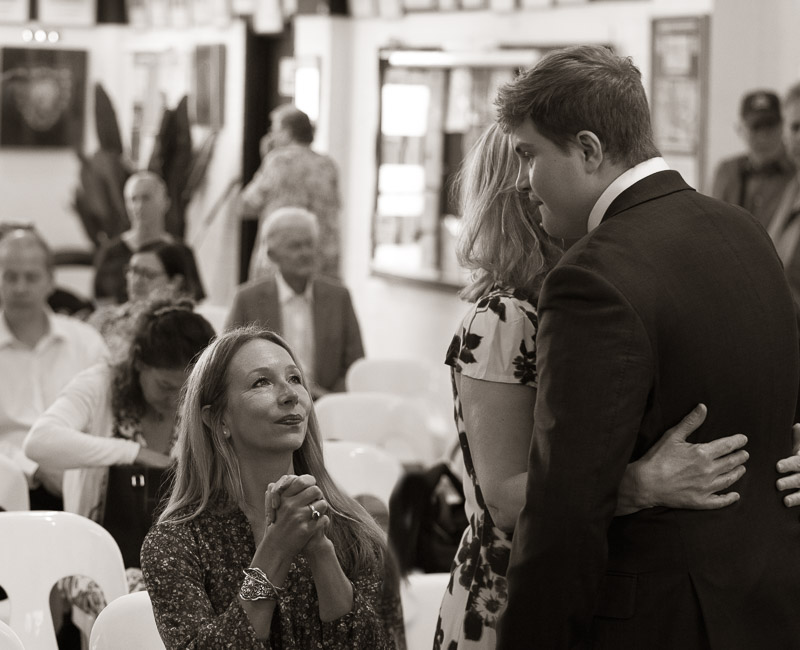How funerals can strengthen families
What I have learned about my work
“I don’t want photos, you know, of people looking puffy eyed!”
This was said to me by a future client who wanted someone to record the funeral of her father as she had many relatives overseas who couldn’t attend. She wanted to record the funeral for her relatives but she was still hesitant.
Don’t confuse funeral photography with weddings! Having a photographer to record your funeral is a totally different thing to a wedding photographer. It’s still early days in having a photographer at a funeral, and yes, people are often surprised when “funeral” and “photographer” are put together.
So, back to me. When I began photographing at funerals in 2007 (for my own grandmother’s funeral), I never realised just how important and moving the process of photography at a funeral could be for families. Often families haven’t seen each other for a long time, if not years. Life goes on, families live overseas, children grow up. A loved one dies and the impulse to gather family and friends together, the practical need to have a funeral, takes priority.
At a funeral people are at their most beautiful when they are being kind to one another. Barriers are lowered and tenderness emerges and thrives. Everyone is human for a day. You can still laugh and be happy at a funeral. You can remember the person’s life. Even the funeral of a young person can be a time of tempered joy. You weep and hug one another but you remember the vitality and vigour of the youth. For an elderly person it can often be a relief that they’re no longer in pain, or in the nursing home. You can join together to remember the person they once were. The person who will live on in your memory. I record these moments of shared intimacy and genuine emotion.
Once the images are taken, selecting the images gives a bereaving family a purpose and given there is no restriction on the number of images in the book, it is a very inclusive process. One family member commented that when he received the book it had brought the family together. He continued, “Our extended family had split in two and the book played a part in healing the rift between the families. Just by having the two families in the one book had an impact.”
Another widow once rang me during the book design process to ask if she could include an image I hadn’t taken that was precious to her as it was a photo of her and her husband and friends a year before her husband died. I had no problem with this, on the contrary I welcomed her suggestion as I very much want families to understand it is their book. Sometime later she said the family had discussed the image and decided it shouldn’t be in the book. This is a small point but to me is indicative of how the family (not just the widow) had taken ownership of the book and I think in doing so, made it part of the healing process. Often the books have photographs of the person when they were young, or at their wedding, or holding their first grandchild, or doing something they loved.
Another woman told me that it had taken her over a year before she could even look at the book. It wasn’t that it was too sad, it was just that with having to deal with the day-to-day issues of selling her father’s house, clearing it out, sorting out the paperwork, a year flew by. She said it was great to be able to see what had actually taken place during the funeral as she had no memory of it at all!
I photographed another funeral over a month ago and the family took a long time to get back to me to telling me their preferred images. I always tell families they don’t have to choose the images but they always want to. The family took their time because it was important to them and they wanted to make sure that all the correct images were chosen and they didn’t want to rush things. Some images of attendees they didn’t even know, “Who’s that?” they’d ask, but they liked the face of the attendee and the fact that this must have been a friend of their father’s and so the image was included.
My photos are of ordinary people showing they grieve and are human. In a small way I think they strengthen families.
The impact of funeral photography on families was never foreseen by me when I started to photograph funerals in 2007. Back then, my motive was to show the beauty in the ordinary and how people are most beautiful when they are being kind. Funerals allowed me to focus on this as everyone is human for a day.
I think funerals serve to connect the self with the rest of humanity. They engender in mourners caritas, or “loving kindness,” a quality that relies on empathy. So, for me, funerals engender humility and compassion and are therefore worthy of being photographed. I hope you think so, too.


